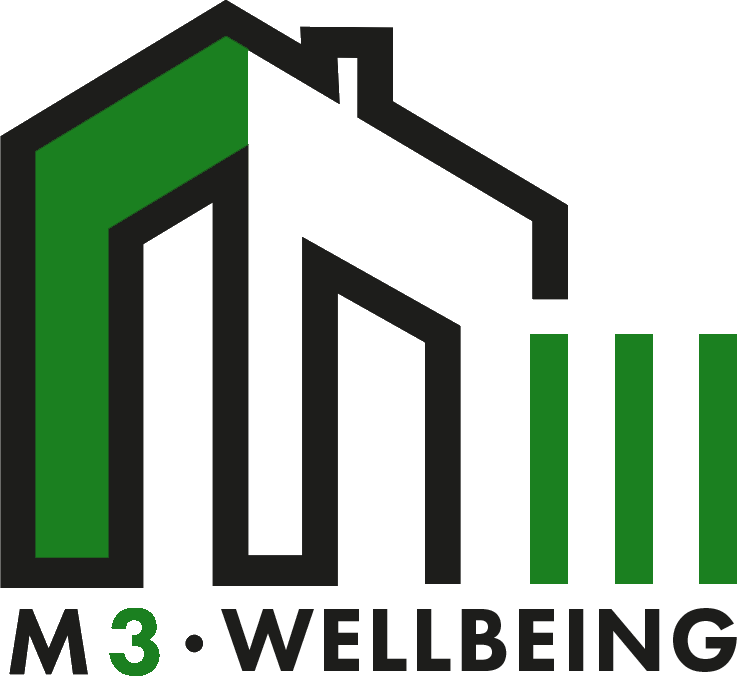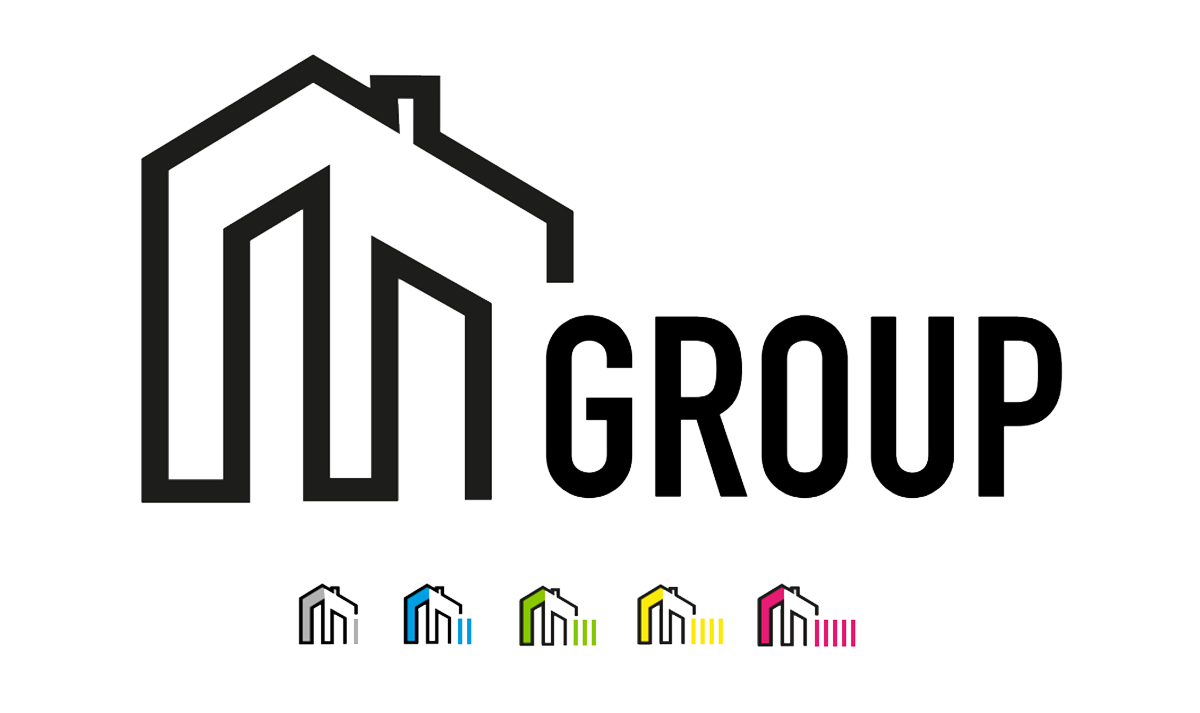Damp and mould are prevalent issues in social housing across the UK, and their impact on residents’ health and wellbeing is significant. These conditions can lead to respiratory problems, allergies, and other serious health risks, particularly for vulnerable individuals such as children, the elderly, and those with pre-existing health conditions.
Addressing damp and mould effectively is essential for ensuring safe and healthy living environments. Fortunately, modern technology, such as those installed by M3 Wellbeing, offers a proactive solution to monitor and manage indoor conditions, helping landlords maintain compliance and protect tenants’ wellbeing.
This article explores the causes of damp and mould, their health and socio-economic impacts, and the legal responsibilities of landlords. It also discusses why these issues are particularly prevalent in social housing and how the innovative sensors installed by M3 Wellbeing can help landlords proactively address these problems.
What Causes Damp and Mould in Social Housing?
Damp and mould are often the result of excess moisture within a property. This moisture can come from various sources, including:
- Condensation: A common issue, especially during colder months, when warm, humid air meets cold surfaces.
- Leaks: Water seeping in from damaged roofs, gutters, or plumbing.
- Rising Damp: Moisture rising from the ground due to ineffective damp-proofing.
- Poor Ventilation: Inadequate airflow, often in bathrooms and kitchens, leading to increased humidity.
These issues are particularly prevalent in older properties or those with insufficient insulation, making social housing residents more susceptible to living with these persistent problems.
The Health Impacts of Damp and Mould
Living in damp and mouldy conditions poses serious health risks. Mould spores, when inhaled, can trigger a range of health issues, including:
Respiratory Problems
Exposure to mould can cause or exacerbate respiratory conditions such as asthma and bronchitis. Those with pre-existing respiratory problems are particularly vulnerable, with mould spores potentially leading to wheezing, coughing, and breathing difficulties.
Allergic Reactions
Mould is a known allergen, and exposure can result in symptoms like sneezing, runny noses, skin rashes, and red, itchy eyes. In severe cases, people may develop more intense reactions, affecting their ability to sleep, work, and enjoy daily activities.
Mental Health Issues
Damp and mould do not just affect physical health. Studies have shown a link between poor living conditions and mental health issues, including anxiety and depression. The constant worry about the state of one’s home, alongside the potential stigma of living in poor conditions, can significantly impact mental wellbeing.
The Broader Socio-Economic Impact of Damp and Mould
Impact on Vulnerable Populations
Damp and mould are not just issues of comfort, they disproportionately affect vulnerable populations, including children, the elderly, and those with pre-existing health conditions. Children exposed to mould are at higher risk of developing asthma, while elderly residents may face worsened respiratory conditions and compromised immune systems.
People with conditions such as COPD (chronic obstructive pulmonary disease) are particularly vulnerable to the adverse effects of damp environments, highlighting the need for landlords to take proactive measures.
Cost Implications for Residents and Housing Providers
Damp and mould issues can also lead to increased costs, both for residents and housing providers. Residents might face higher heating bills due to damp, cold conditions, or incur costs related to healthcare due to mould-induced illnesses.
For housing providers, the cost of reactive maintenance can be significant if issues are not identified early. In contrast, investing in monitoring solutions like M3 Wellbeing’s sensors can help prevent these problems from escalating, saving money in the long run.
This sensor monitors conditions that can lead to damp and mould by measuring temperature, humidity, and CO2 levels. It provides insights into the indoor environment, helping to identify areas with poor ventilation or conditions that might encourage mould growth.
In addition to measuring temperature, humidity, and CO2, this sensor offers advanced features such as air quality monitoring. It helps assess indoor environments to ensure they remain healthy, preventing issues related to dampness and poor ventilation.
Legislation and the Responsibilities of Landlords
UK housing legislation has been clear on the responsibilities of landlords to provide safe and habitable living environments. The Homes (Fitness for Human Habitation) Act 2018 places a legal duty on landlords to ensure that homes are free from serious health hazards, including damp and mould. This act allows tenants to take legal action if landlords fail to address these issues adequately.
In November 2022, the tragic case of Awaab Ishak, a two-year-old boy who died due to prolonged exposure to mould in social housing, highlighted the severity of this issue and spurred the UK government to urge landlords to take immediate and effective action. This tragedy has led to increased scrutiny and enforcement, making it imperative for housing associations and private landlords to proactively manage damp and mould problems to avoid legal consequences and protect residents’ health.
Why Are Damp and Mould So Prevalent in Social Housing?
The prevalence of damp and mould in social housing can often be attributed to:
1. Ageing Infrastructure
Many social housing units are older buildings that may lack modern insulation and efficient ventilation systems. Older properties are more susceptible to leaks, rising damp, and condensation problems, which can lead to persistent issues with dampness.
2. Energy Inefficiency
Poorly insulated properties are harder to keep warm, which can lead to condensation when warm air meets cooler surfaces. The rising cost of energy means that some residents are unable to heat their homes adequately, exacerbating the problem.
3. Overcrowding
Overcrowded housing conditions contribute to higher humidity levels due to increased moisture from daily activities like cooking, bathing, and washing. Without sufficient ventilation, this moisture can quickly turn into damp and mould issues.
How M3 Wellbeing Sensors Can Help Landlords
M3 Wellbeing offers innovative solutions to monitor and manage indoor air quality, damp, and mould risks. The cloud-hosted sensors installed by M3 Wellbeing provide real-time data on factors such as humidity, temperature, and air quality, helping landlords detect and address issues before they escalate. Here’s how the sensors installed by M3 Wellbeing make a difference:
Proactive Monitoring
The environmental sensors, installed by M3 Wellbeing, continuously monitor indoor conditions, identifying potential risks before they become severe problems. For example, if humidity levels exceed a safe threshold, landlords can be alerted and take prompt action to ventilate the area or fix any underlying issues.
Data Driven Decision Making
The data collected by the sensors installed by M3 Wellbeing is managed via a user-friendly dashboard, allowing landlords to view reports, analyse trends, and make informed decisions. This can help prioritise maintenance tasks and allocate resources more effectively, ensuring that properties remain safe and compliant.
Ensuring Compliance with Regulations
With increased scrutiny on landlords to maintain healthy living environments, sensors installed by M3 Wellbeing help housing associations and private landlords meet their legal obligations. By providing real-time data and alerting systems, these sensors assist in maintaining compliance with the Homes Act and other relevant regulations, reducing the risk of legal issues.
Promoting Tenant Wellbeing
Ultimately, the goal of the sensors installed by M3 Wellbeing is to create healthier living environments for residents. By addressing damp and mould problems promptly, landlords can help improve the physical and mental wellbeing of tenants, ensuring they live in safe, comfortable, and healthy homes.
FAQs About Damp and Mould in Social Housing
Installing environmental sensors that track temperature, humidity, and CO2 levels can help you monitor conditions that could lead to damp and mould. Solutions like those offered by M3 Wellbeing provide real-time data and alerts, enabling you to address issues before they escalate.
Under the Homes (Fitness for Human Habitation) Act 2018, landlords are legally required to ensure that their properties are free from serious health hazards, including damp and mould. Failure to address these issues can result in legal action from tenants and enforcement by local authorities.
To remain compliant, regularly inspect properties, quickly address reported issues, and use monitoring technology like the sensors installed by M3 Wellbeing. These tools provide continuous data on environmental conditions, helping you take preventive measures and respond quickly to potential problems.
Yes, by installing sensors that monitor indoor conditions, you can detect potential damp and mould issues early, allowing for preventive maintenance rather than costly reactive repairs. This can save money in the long term by avoiding significant structural damage and tenant health complaints.
Look for sensors that offer real-time monitoring, easy installation, and comprehensive data insights. Ensure they can measure key factors like temperature, humidity, and CO2 levels, as these are indicators of conditions that could lead to damp and mould. Solutions like the GEM Smart and Aico Environmental Sensors, installed by M3 Wellbeing, are specifically designed for this purpose.
M3 Wellbeing: Proactive Solutions for Healthier Homes
M3 Wellbeing specialises in the installation of cloud-hosted sensors that monitor indoor air quality, damp, and mould in real-time. Our solutions are designed to help housing associations and landlords maintain safe, compliant, and healthy environments for tenants. By collecting data on humidity, temperature, and other environmental factors, the environmental sensors installed by M3 Wellbeing enable landlords to identify and address issues before they escalate, ensuring residents’ wellbeing is safeguarded.
Why Choose M3 Wellbeing?
- Real-Time Monitoring: Sensors installed by M3 Wellbeing provide continuous monitoring and real-time alerts, allowing for prompt action.
- Data Insights: The dashboard offers comprehensive insights, helping landlords make informed decisions about maintenance and property management.
- Regulatory Compliance: Using the technology installed by M3 Wellbeing helps landlords meet legal requirements and avoid the risks of non-compliance.
- Enhanced Tenant Wellbeing: Creating healthier living environments by addressing potential hazards quickly and efficiently.
If you are a landlord looking for reliable solutions to monitor and manage damp and mould in your properties, consider M3 Wellbeing. Our installation of innovative technology can help you maintain compliance, reduce risks, and ensure your tenants’ safety and wellbeing.
Contact Us
For more information on how M3 Wellbeing can help you monitor and manage your properties effectively, get in touch with our team today to learn more.
You can get in touch with us at 01908 039526 or please head to our contact us page where you can complete our online form. We look forward to hearing from you.






